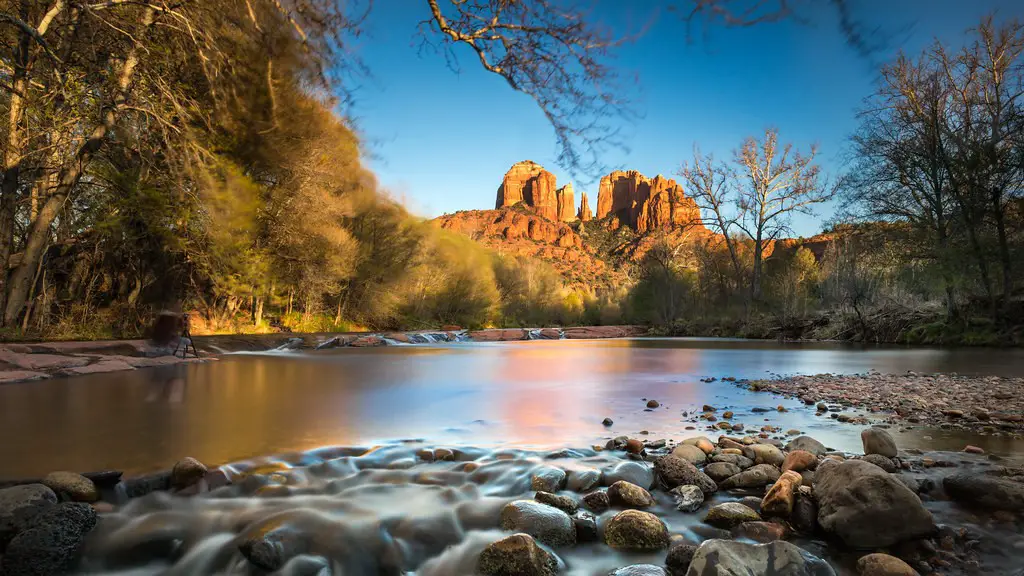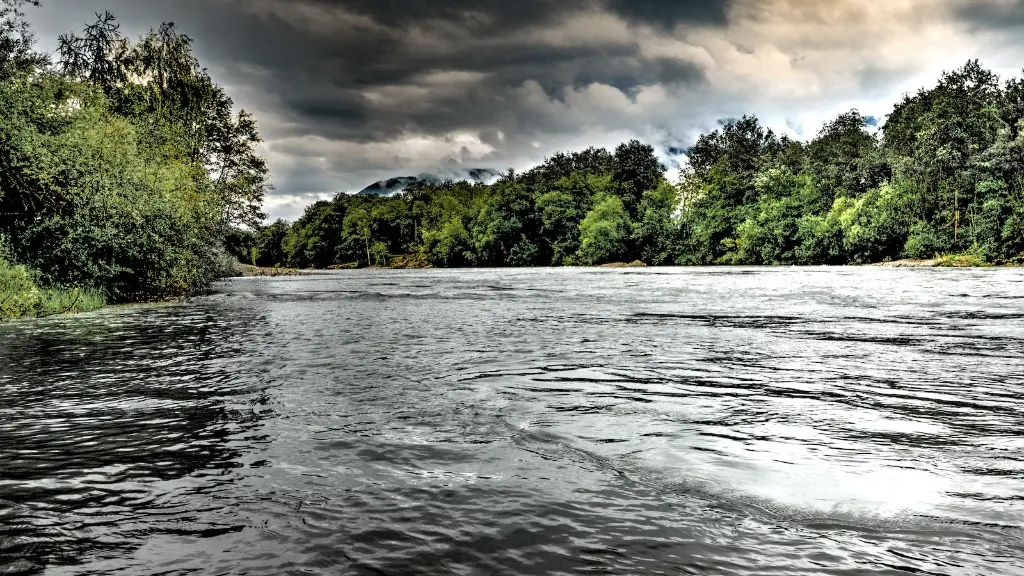The Yangtze River is the longest river in China and the third-longest in the world, covering over 6,000 kilometers of Chinese geography. With its immense length and breadth, it is no surprise that the river has always been a powerful force of nature. The Yangtze, or ‘Chang Jiang’ in Chinese, forms a major part of Chinese culture, history, and lifestyle. To understand the significance of the Yangtze River, the speed of its waters must be taken into consideration.
The speed of the Yangtze River is not constant and varies depending on the season. In the dry season, the average speed of the water is about 3 km/hour. This usually occurs from November to February. During the wet season, when the river floods, its average speed increases drastically. It can range from 6 km/hour to even 30 km/hour depending on the intensity of the floodwaters.
The speed of the Yangtze River is directly related to the amount of rainfall it receives during the flood season. The area around the river is prone to heavy monsoon rains and the resulting floods can fill the river to its capacity, causing the current to become much faster. Thus, the peak speed of the river is largely dependent on the weather.
The speed of the Yangtze River has a direct effect on the lives of people living in the area. When the river floods, the speed of the current can be so strong that it carries away everything in its path, including houses, crops, livestock, and even people. Furthermore, the speed of the current can also make it difficult for boats to navigate the river, resulting in accidents and fatalities.
Given how significant the speed of the Yangtze River is, local authorities in China have undertaken numerous initiatives to try and control the speed of the current. This includes the construction of dams and embankments, which help regulate the speed of the river to a certain extent. Furthermore, the government also monitors the weather closely during the flood season and issues warnings about the potential for fast currents. By doing so, they are attempting to reduce the risks associated with flooding.
The speed of the Yangtze river is far from a simple concept; it is something more than just a flowing current, it’s a window into Chinese culture and history. The people living near the Yangtze understand its power and they have learned to adapt and even make use of this great river.
Environmental Impact of the Yangtze River
Chinese authorities have realised that the Yangtze River has a major impact on the environment. As the fastest-flowing river in the country, it causes a lot of erosion and sediment buildup in its path, which directly affects the environment of the nearby land and the people living there. Also, the growing population in the area has led to excessive water pollution, with some estimates suggesting that nearly half of all China’s pollution ends up in the Yangtze River.
To combat this issue, China has launched numerous initiatives. They have set regulations and guidelines for industries on how to dispose of their waste in such a way that it does not end up in the river. Additionally, the government is investing in cleaner energy sources like solar and wind to reduce the amount of pollution caused by energy-intensive industries. Additionally, reforestation projects around the Yangtze are being launched to improve the air quality and help prevent excessive erosion.
However, these are all long-term solutions, and much of the impact of the Yangtze River on the environment has already been felt. The effects of pollution, deforestation, and erosion have caused long-term damage to the region, and they need to be addressed quickly in order to ensure the health and safety of the people living in the area.
Protection of Endangered Species
The Yangtze River is home to many endangered species. The river serves as a breeding and spawning ground for many species of fish, amphibians, birds, and reptiles. The Chinese government is taking steps to protect these species and preserve the biodiversity of the area. This includes amending fishing laws and regulations, creating special protection zones, and introducing regulations to reduce water pollution.
However, these measures have not always been effective. There have been instances where overfishing has taken a toll on the aquatic species living in the Yangtze River. Additionally, the rising water pollution has caused a number of species to become completely extinct. To counteract these effects, the Chinese government has implemented an experimental program to breed and release over 200,000 fish into the river every year.
It is important that measures are taken to protect the endangered species in the Yangtze River, as they are an integral part of the local ecology and help to maintain a healthy balance in the environment. Furthermore, these species are also important economically, as they provide food for the local communities and help to boost tourism in the area.
Preservation of the Yangtze River
With the Yangtze covering such a vast area and affecting the lives of millions of people, it is essential that it is preserved. To this end, the Chinese government has implemented numerous measures to try and protect the river. This includes implementing strict regulations on water pollution, introducing stricter river-borne traffic regulations, and investing in cleaning and reforestation projects in the region.
Additionally, the government has also been taking steps to raise awareness about the importance of the Yangtze. This includes launching campaigns to educate people about the fragile ecosystem of the river and the importance of conserving the area. Furthermore, local authorities have been working with researchers to try and find ways to make use of existing technology to protect the environment from further damage.
The Yangtze River is often seen as a symbol of power and beauty in China, so it is important that it is preserved for future generations. Luckily, with the help of strong government policies and local initiatives, the Yangtze River can provide a brighter future for the people who live in the area.
Uses of the Yangtze River
The Yangtze River is a source of life for many people living in the area, and has countless uses. It serves as a major transport route for goods and people, with millions of people taking boats and ferries along it every year. Additionally, it is also used as a source of irrigation for the local farms and is a major source of electricity for the nearby cities.
The tourism industry has also been taking advantage of the Yangtze River, with boat tours and river cruises being a popular form of recreation. Furthermore, the Yangtze is also well known for its rich cultural history and many people visit the region to learn about the culture and people who live in the area.
The Yangtze River is indeed a powerful source of life for those living in the area. It can be a source of jobs, food, and energy, and can be a powerful tool for economic development. With the right policies and initiatives, the Yangtze can bring about immense benefits for the people and environment of the region.
Conclusion
The Yangtze River has immense significance for the Chinese people and for the environment. Its speed is highly variable and depends on the weather and season, so it is important that the local population is aware of the potential risks associated with it. The government and local authorities are taking steps to protect the Yangtze and the species that inhabit it, and to make use of it economically. With the right initiatives and policies in place, the Yangtze River can bring tremendous benefits to the area while maintaining its natural beauty and majestic power.




